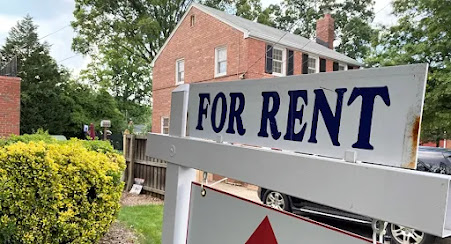With US Federal Eviction Ban Overturned, Nearly 1 Million Renters Likely to Lose Home By End of Year
In addition to tenants, homeowners with federally-backed mortgages were also protected from eviction during the first part of the COVID-19 pandemic. With the foreclosure ban having expired in July, 1.75 million homeowners behind on payments are at risk of losing their homes alongside millions of renters.
According to estimates by Goldman Sachs, some 750,000 Americans are likely to be evicted from their homes before the end of the year, due to the US Supreme Court striking down the federal eviction moratorium last week.
The financial services giant estimates that between 2.5 and 3.5 million households are considerably behind on paying rent, owing between $12 billion and $17 billion in total, CNN reported on Monday.
However, that’s not all of the people likely to face eviction: the Aspen Institute reported at the end of July, as the first eviction moratorium put in place by the US Centers for Disease Control and Prevention (CDC) drew to a close, that 6.7 million renters, or a total of 15 million people, were “on the precipice of eviction.”
Aspen estimated they collectively owed $20 billion to their landlords, but the National Apartment Association, a group representing landlords, claimed at the time that the real number was $73 billion.
Other estimates are far higher: the US Census Bureau reported that a survey conducted in mid-August found that 1.3 million Americans believed themselves likely to be evicted in the next two months.
“The strength of the housing and rental market suggests landlords will try to evict tenants who are delinquent on rent unless they obtain federal assistance,” the analysts said. “And evictions could be particularly pronounced in cities hardest hit by the [pandemic crisis], since apartment markets are actually tighter in those cities.”
Goldman Sachs’ estimate is so much lower than the total number of renters behind on rent because several states have their own separate eviction bans put in place on top of the CDC’s ban, many of which extend into late 2021 and even into next year. Landlords have also attempted to challenge those bans or parts of those bans and had some successes, as in New York, but have also been turned back, as in Los Angeles.
Just six US states and Washington, DC, still have eviction bans in place going into September, although another 10 states have some form of tenant protections connected to their distribution of rental assistance.
As the CDC’s original eviction ban expired at the end of July, the White House initially declined to renew it, citing a Supreme Court ruling the prior month rejecting the legal underpinning of the CDC mandate. However, while Associate Justice Brett Kavanaugh advised the administration that only a legislative extension was likely to pass legal muster, Congress went into a seven-week recess without attempting to implement one.
Round-the-clock protests outside the US Capitol in Washington, DC, turned the glaring omission into a national spectacle, and on August 3, the CDC implemented a new ban with slightly different standards, claiming it wasn’t an extension of the old ban. However, on August 27, the Supreme Court ruled it was legally the same ban as before and struck it down.
Even during the moratorium, evictions didn’t totally stop, and the revised ban implemented during most of August gave even less protection than before. However, as the latest outbreak of the Delta variant spread nationwide, the number of counties protected by the ban, as measured by the pace of community spread of COVID-19, grew dramatically to include almost the entire country anyway.
On Friday, the CDC counted more than 176,000 reported COVID-19 cases nationwide - the most since late January and more than twice the number of daily cases seen a month ago.
Compounding the tragedy of the situation is the fact that Congress has appropriated more than $46 billion for emergency rental assistance, for which both tenants and landlords may apply. However, the pace of distribution has been so slow that even though the funds were authorized in March, by the end of August just 11% of the money - $5 billion - has been paid out, despite the law mandating that at least 90% of the funds be paid out by government agencies.
According to the Census survey cited above, 2.2 million people reported applying for rental assistance through either state or local governments and had either not heard back or been denied aid.
In other words, many of the people likely to be evicted could have had their rent debt erased if not for bureaucratic bungles.
House Speaker Nancy Pelosi (D-CA) denounced the court decision in a letter to her colleagues on Friday, saying they were “assessing possible legislative remedies.” However, she only mentioned ways to expedite paying out rental assistance and gave no indication the Democrats, who control both houses of Congress and the White House, would make any attempt to pass their own eviction moratorium.
Throughout the crisis, Pelosi has looked to the White House for solutions, despite Biden calling on Congress to fix it, as the Supreme Court made abundantly clear in both its June 27 and August 27 rulings.


No comments:
Post a Comment